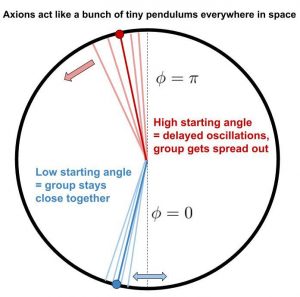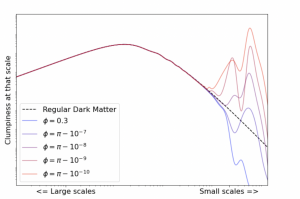Harrison is starting their fifth year as a PhD student at the University of Toronto’s David A. Dunlap Department of Astronomy & Astrophysics, specializing in theoretical cosmology and dark matter research.
Harrison grew up in Toronto, and graduated from the interdisciplinary Arts & Sciences program at McMaster University with a Combined Honours degree in Physics and a minor in Mathematics.
How did you first become interested in Astronomy and Astrophysics?
As a child, I was always fascinated with the night sky, particularly on camping trips in Algonquin Park where I could get away from the bright lights of Toronto. I remember seeing the Andromeda Galaxy through binoculars for the first time, and being blown away by the sheer sizes and scales involved. I started to seriously consider a career in astrophysics after I participated in the Summer Undergraduate Research Program at CITA here at U of T during the summer of 2016, and I’ve been hooked on theoretical cosmology ever since.
Can you tell us a little bit about your specific field of research?
What’s the most exciting thing about your research?
The aspect of my research that I find most exciting is how creative and speculative it is. Much like how the author of a fantasy or sci-fi novel gets to explore how a hypothetical character would react and evolve in extreme and dangerous situations, so too do I get to explore how these hypothetical particles would behave and evolve in similarly extreme situations that no one has ever imagined before. We are exploring new ground conceptually, which is already very exciting, but at the end of the day the goal is to calculate observable predictions that can be compared to the universe we live in. The possibility of these tangible results and real predictions makes the speculative parts of my research even more exciting.
What do you hope will be your next step, professionally?
When I’m not writing axion software, I am also part of the Simons Observatory collaboration, which is working on building a new cosmology telescope in the next couple of years. By the time I graduate, the telescope will be starting to make observations of the early universe, and these observations have the potential to shed new light on the Axion models I am exploring. After I graduate, I would love to use this new data from the Simons Observatory to actually search for the observable signatures that I am currently predicting, and perhaps either confirm or rule out these hypothetical Axion models.In the longer term, I am very passionate about science communication and teaching, and I would love to be able to teach physics or astronomy at a post-secondary level. I love finding new ways to communicate these complex and always-evolving ideas, and help to share my excitement and enthusiasm about them!

Axions can be thought of as a bunch of pendulums oscillating everywhere in space. How close the pendulums start to the very top determines how spread out they become. Credit: Harrison Winch.

Axions with high starting angles are clumpier on small scales, while axions with low starting angles are less clumpy on small scales. Credit: Harrison Winch.

This image shows what the universe would look like if we could see all the dark matter. Credit: NASA.
_________________________________________________________________________________________



